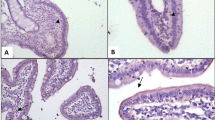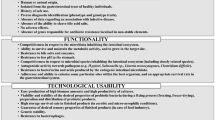Abstract
The fungal fermented wheat straws as animal feeds have been evaluated for its toxicological and nutritional status in male rats (Holtzman strain). Digestibility of dry matter and other nutrients as well as fiber fractions were found significantly higher (P < 0.05) in straw fermented with either Ganoderma sp. rckk02 (T3) or Crinipellis sp. RCK-1 (T4) than unfermented straw (T1) or straw fermented with Pycnoporus cinnabarinus (T2). The aflatoxin B1, B2, G1 and G2 were either absent or present in permissive levels in T3 and T4 diets and exhibited normal stress enzyme activity in case of alanine aminotransferase (ALT), aspartate aminotransferase (AST) and lactate dehydrogenase (LDH) enzymes whereas, rats fed on T2 diet showed elevated levels of stress enzymes (ALT, AST and LDH activity), 100% high morbidity and 8.3% mortality. This study suggests that Ganoderma sp. rckk02 and Crinipellis sp. RCK-1 are efficient in improving the nutritive value of poor quality straw and do not posses any threat for their subsequent use as ruminant feed.
Similar content being viewed by others
References
Kim S, Dale BE (2004) Global potential bioethanol production from wasted crops and crop residues. Biomass Bioenerg 26:361–375
Hoskinson RL, Hess JR, Foust TD, McKean WT, Lewis MS (2001) Fractionation of higher value crop residue components for conversion into bioenergy and industrial products, ASAE Annual International Meeting, Sacramento, California, USA
Kuhar S, Nair LM, Kuhad RC (2008) Pretreatment of lignocellulosic material with fungi capable of higher lignin degradation and lower carbohydrate degradation improves substrate acid hydrolysis and the eventual conversion to ethanol. Can J Microbiol 54:305–313
Kumar S, Gomes J (2008) Performance evaluation of reactors designed for bioconversion of wheat straw to animal feed. Anim Feed Sci Technol 144:149–166
Shrivastava B, Thakur S, Khasa YP, Gupte A, Puniya AK, Kuhad RC (2011) White-rot fungal conversion of wheat straw to energy rich cattle feed. Biodegradation 22:823–831
Sahoo B, Sarawat ML, Haque N, Khan MY (2002) Influence of chemical treatment of wheat straw on carbon, nitrogen and energy balance in sheep. Small Rumin Res 44:201–206
Okano K, Ohkoshi N, Nishiyama A, Usagawa T, Kitagawa M (2009) Improving the nutritive value of madake bamboo, Phyllostachys bambusoides, for ruminants by culturing with the white-rot fungus Ceriporiopsis subvermispora. Anim Feed Sci Technol 152(3):278–285
Kirk TK, Farrel RL (1987) Enzymatic combustion: the microbial degradation of lignin. Ann Rev Microbiol 41:465–505
Akin DE, Sethuraman A, Morrison WH, Martin SA, Eriksson KEL (1993) Microbial delignification with white rot fungi improves forage digestibility. Appl Environ Microbiol 59(12):4274–4282
Kuhad RC, Singh A, Eriksson KEL (1997) Microorganisms and enzymes involved in the degradation of plant fiber cell walls. Adv Biochem Eng Biotechnol 57:47–125
Sharma RK, Arora DS (2010) Production of lignocellulolytic enzymes and enhancement of in vitro digestibility during solid state fermentation of wheat straw by Phlebia floridensis. Bioresour Technol 101:9248–9253
Morgavi DP, Riley RT (2007) An historical overview of field disease outbreaks known or suspected to be caused by consumption of feed contaminated with Fusarium toxins. Anim Feed Sci Technol 137:201–212
Binder EM, Tan LM, Chin LJ, Handl J, Richard J (2007) Worldwide occurrence of mycotoxins in commodities, feed and feed ingredients. Anim Feed Sci and Technol 137:265–282
Hoogerheide JC, Yamada K, Littlehailes JD, Ohno K (1979) Guidelines for testing of single cell protein destined as protein source for animal feed (II). IUPAC 51:2537–2560
Villas-Bôas SG, Esposito E, Mitchell DA (2002) Microbial conversion of lignocellulosic residues for the production of animal feeds. Anim Feed Sci Technol 98:1–12
OECD guidelines for testing of chemicals, No. 425. Acute oral toxicity—modified up and down procedure. Organisation for economic cooperation and development, Paris
AOAC (2000) Association of official analytical chemists (AOAC), official methods of analysis, 17th edn. AOAC, Arlington
Goering HK, Van Soest PJ (1970) Forage fibre analysis (apparatus, reagents, procedures and some applications). Agriculture Hand book 379. ARS, USDA, Washington
Van Soest PJ, Robertson JB, Lewis BA (1991) Methods of dietary fibre, neutral detergent fibre and non-starch polysaccharides in relation to animal nutrition. J Dairy Sci 74:3583–3597
Henry JB (2006) Clinical diagnosis and management by laboratory methods, 21st edn. Saunders Elsevier, Philadelphia
Babson AL, Babson SR (1973) Kinetic colorimetric measurement of serum lactate dehydrogenase activity. Clin Chem 19(7):766–769
Snedecor GW, Cochran WG (1989) Statistical methods, 8th edn. Iowa State University Press, Ames
Kaneko JJ, Harvey JW, Bruss ML (1997) Clinical biochemistry of domestic animals, 5th edn edn. Academic Press, New york, pp 895–899
Zucker I, Beery AK (2010) Males still dominate animal studies. Nature 46:690
Akinfemi A, Mohamed MI, Ayoade JA (2009) Biodegradation of cowpea shells by Pleurotus species for it use as ruminant feed. World J Agric Sci 5(5):639–645
Alanaine aminotransferase (ALT) and Aspartate aminotransferase (AST) (2007). Technical Bulletin 114, 3347. Investment Blvd. Haywad, CA 94545 U.S.A. Cholestech Corp. MKT12916 Rev. B
Coley HM, Lewandowicz G, Sargent JM, Verrill MW (1997) Chemosensitivity testing of fresh and continuous tumor cell cultures using lactate dehydrogenase. Anticancer Res 17(1A):231–236
Acknowledgments
The authors gratefully acknowledge the financial assistance from Department of Biotechnology, Government of India, New Delhi and Ayurvet Pvt. Ltd. Delhi. The authors are grateful to Prof. P. N. Bhat, Former D. D. G., Indian Council of Agricultural Research, for all moral support and constructive criticism and suggestions during the course of the study.
Author information
Authors and Affiliations
Corresponding author
Rights and permissions
About this article
Cite this article
Sharma, K.K., Shrivastava, B., Nandal, P. et al. Nutritional and Toxicological Assessment of White-Rot Fermented Animal Feed. Indian J Microbiol 52, 185–190 (2012). https://doi.org/10.1007/s12088-011-0222-2
Received:
Accepted:
Published:
Issue Date:
DOI: https://doi.org/10.1007/s12088-011-0222-2




